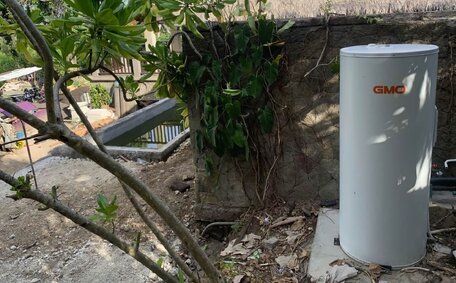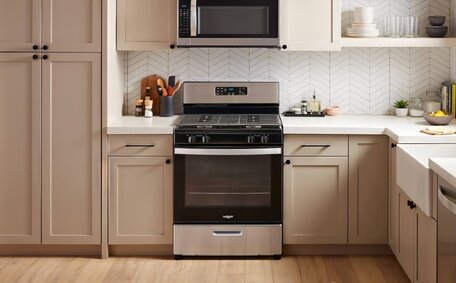
Financial Benefits of Natural Gas
Natural gas offers many financial perks over other energy sources. It burns cleaner and costs less than alternatives, helping lower monthly bills.
Read MoreHaving a reliable and efficient hot water system is crucial for every home. When it comes time to replace an ageing unit, homeowners face an important decision - gas or electric? Both systems have their own sets of pros and cons when it comes to upfront costs, energy efficiency, operating expenses, and maintenance requirements.
Gas systems work by heating water with natural gas or liquefied petroleum gas flames. Electric systems use heating elements that are powered by electricity. Heat pumps are a third, emerging option that transfers thermal energy from the air to heat water.
In this guide, we’ll break down the key differences between gas and electric hot water systems. In this guide, we’ll break down the key differences between gas and electric hot water systems. We’ll also touch on available rebates and incentives.
Our goal is to provide a comprehensive overview so you can determine whether a gas or electric hot water system is the most suitable and cost-effective option for your home.
Gas hot water systems heat water using natural gas or LPG. The gas is burned to produce a flame in the burner compartment of the unit. This flame heats up water within the storage tank or continuously as it passes through a heat exchanger coil.
In a storage tank gas hot water system, cold water enters the bottom of the insulated tank. As the flame heats the water, hot water rises to the top of the tank where it can then flow to taps and showers when needed. The most common storage systems are regular tank and tankless models.
Electric hot water systems use electric heating elements to heat the water instead of gas burners. The elements heat and transfer thermal energy to heat cold water in the storage tank or as it passes through the heat exchanger in a tankless model.
Electric storage tank systems have heating elements at the bottom and sometimes at the top of the tank. The elements switch on to maintain the set temperature. Electric tankless models only heat the water as needed.
The main difference is gas systems use the combustion of gas to directly heat the water, while electric systems use electrical current flowing through heating elements that transfer heat to the water.
When it comes to upfront costs, gas hot water systems tend to be less expensive than electric systems.
The purchase price of a standard gas storage tank hot water system averages $1000 to $2000 installed. Electric storage tank systems range from $1200 to $2500 installed depending on the tank size.
Tankless gas hot water systems have an installed cost of $2000 to $4000. Tankless electric systems are more expensive at $2500 to $5500 installed.
This is partly due to the higher cost of electric heating elements compared to gas burners. Complex electronic controls also add to the price of electric tankless models.
However, gas systems incur extra costs for gas line installation and connection if the home does not already have gas. This can add $500 to $1000+ to the total cost.
Electric systems avoid this additional expense, giving them a potential advantage in homes without existing gas lines. But in most cases, gas systems still have lower overall upfront costs.
Installing a new gas or electric hot water system requires professional tradespeople, which impacts the total cost. Here are some of the main installation factors to consider:
As a rough guide, basic installation costs are:
System Type Typical Installation Cost
| Gas storage tank | $500 - $1000 |
| Electric storage tank | $800 - $1200 |
| Gas tankless | $1000 - $2000 |
| Electric tankless | $1200 - $2500 |
Complex installations or the need for gas line work, panel upgrades or difficult venting can increase costs. Overall, gas systems tend to have lower installation costs on average.
The main equipment in a gas hot water system includes the storage tank or heat exchanger, gas valve and burner compartment, flue, and electronic controls.
For a storage tank gas system, the insulated tank itself costs $500 to $1000 depending on the capacity. The gas valve and burner unit averages $250 to $500.
Tankless gas heaters have built-in heat exchangers that range from $700 to $1200. The gas valve and burner costs a further $150 to $350.
Electric hot water systems equipment comprises the storage tank or heat exchanger unit and heating elements. Insulated electric storage tanks cost $600 to $1200. Replacement heating elements are usually $100 to $250 each.
The heat exchanger unit in an electric tankless model ranges from $900 to $1600. Built-in electric heating elements cost around $300 to $500.
Gas systems require less electrical components, making the equipment cheaper overall. But electric systems avoid the need for gas lines and venting materials, balancing out costs.
When it comes to ongoing running costs, gas hot water systems are generally more affordable to operate than electric systems.
An efficient gas storage tank system costs around $300 to $450 per year to run. Gas tankless models average $325 to $550. These costs are based on gas prices of 10 to 15 cents per MJ.
Electric storage tank systems can cost $400 to $700 yearly to operate. Electric tankless water heaters range from $550 to $900 per year. These assume electricity rates of 20 to 30 cents per kWh.
Why are operating expenses lower for gas systems?
However, gas prices are more volatile than electricity. And electric systems can leverage cheaper off-peak power rates. Over the 10+ year lifespan, gas systems maintain a clear annual cost advantage in most regions.
When it comes to energy efficiency, gas hot water systems generally perform better than electric models. Gas systems heat water faster and lose less standby heat through storage tanks. But new heat pump water heaters are bridging this efficiency gap.
Gas systems are around 82-95% energy efficient depending on the model and configuration. The best electric storage tank models achieve 75-80% efficiency. Electric tankless systems fare slightly better at around 80-85% efficiency.
However, heat pump water heaters are now the most energy efficient electric option. By leveraging heat extraction technology, the best heat pump models exceed 300% efficiency. But they cost more than conventional electric systems.
In terms of environmental impact, electric systems have an advantage as they produce no direct greenhouse gas emissions. Gas systems generate carbon dioxide and other emissions through gas combustion during operation. But the electricity used to power electric systems also has embedded emissions depending on the energy source.
Solar hot water systems are the most environmentally friendly option. But they require adequate roof space and sunlight exposure. For consumers after a balance of efficiency, costs and lower emissions, heat pump water heaters offer a compelling solution.
When it comes to reliability, gas and electric hot water systems have comparable lifespans of 10-15 years on average.
Gas systems require annual inspections by a licenced gasfitter to check the gas valve, burner, flue and safety controls. This costs around $150 per year.
Other maintenance tasks include flushing the tank to remove sediment every 1-3 years and replacing the anode rod every 5 years for $150-250 in a storage tank model.
Electric systems need less preventative maintenance. Storage tanks should be drained and flushed every 1-5 years to remove silt buildup. Heating elements may need replacing every 5-8 years at a cost of $150-300 per element.
Repair costs are similar for gas and electric systems averaging $200 to $600 depending on parts and labour. Installation of difficult to access units can drive up costs. Overall maintenance and repair expenses are comparable over the lifespan.
There are a number of rebates and incentives currently available from the Australian government and local councils that may help lower the initial cost of a new gas or electric hot water system:
Homeowners should check for the latest rebates available in their area. Taking advantage of these can offset some of the upfront cost of a new hot water system.
When deciding between gas and electric hot water systems, there are several factors to weigh up:
For most households, gas provides the best value for money overall. But heat pumps should be considered if lower emissions are a priority. Speak to local plumbing experts to find the most suitable and cost-effective system for your home.
There are several other important factors to weigh up when deciding between a gas or electric hot water system:
Considering these additional factors will ensure you choose the most suitable, cost-effective hot water system for your home’s unique needs.
Selecting the most appropriate hot water system for your home comes down to weighing up the pros and cons of gas and electric options. Consider how each system’s upfront costs, energy efficiency, operating expenses, maintenance needs, rebates, and lifetime value align with your household’s specific requirements.
For most homes, a standard gas storage tank or tankless system offers the best return, with lower equipment costs and affordable long-term running costs. But an electric heat pump is worth considering if maximising energy efficiency and minimising emissions are priorities.
Seek professional advice from local plumbers to match a system to your needs. And take advantage of available rebates to offset purchase costs.
With these steps, you’ll be able to make the right hot water system choice for your home. Ultimately, assess your regular hot water usage, climate, number of occupants, existing utility connections, and budget.
Natural gas offers many financial perks over other energy sources. It burns cleaner and costs less than alternatives, helping lower monthly bills.
Read MoreChoosing the correct hot water system size involves considering factors like number of household members, number of bathrooms, peak usage times and daily hot water needs per person. Our guide helps determine the right system capacity.
Read MoreHaving trouble with your gas water heater not heating properly? The pilot light may have gone out. Follow our clear guide on relighting your gas water heater’s pilot light in 6 easy steps. Or call the friendly experts at Balmain Plumbing if you need assistance relighting your pilot.
Read MoreBalmain, 2041 NSW
We will call back as soon as possible.




